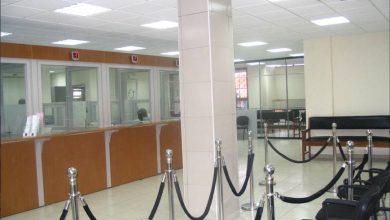Lessons from NBS Bank system crash
Earlier this month, pictures circulated on social network platforms such as WhatsApp and Facebook, showing desperate customers seated on the floor in banking halls. When I got some, I quickly dismissed them as one of the works of graphic designers using photoshop to poke fun.
However, upon closer scrutiny, I was convinced the pictures were real and were taken by frustrated customers within banking halls and premises of NBS Bank, one of the four commercial banks listed on the Malawi Stock Exchange (MSE).
That was on the evening of Monday, October 5 2015. That was the day the bank system went haywire such that customers could neither transact on automated teller machines (ATMs) nor over-the-counter in the banking hall.
To its credit, albeit late, NBS Bank management opened up, explained the crisis and apologised to customers and all stakeholders for the inconvenience caused by the crash of its core banking system software. That was a bold step.
Information and communications technology (ICT) professionals said the problem emanated from a corrupted file in the core banking system. NBS Bank uses Temenos 24 (T24) banking software also used by several other local banks.
This week, NBS Bank announced an investment of about K4 billion in a new system from the same supplier. The new system, to roll out in February 2016, is said to be “more sophisticated” and “will revolutionalise the art of banking in Malawi”.
Coming after the crisis, this is a good development. At the same time, it could also be a subtle acceptance by the bank that it is using an outdated system which, over the years, might have been overtaken by the fast-paced technological advancements.
While NBS Bank took it on the chin and accepted the problem, Bankers Association of Malawi (BAM) seemed to live in denial when it downplayed the inconvenience faced by the bank’s customers, describing it as “one of those rare incidents”. That is one of the most careless statements, especially coming from an institution where customers are supposed to seek redress and give feedback on operations of commercial banks. That was like rubbing salt to a wound or a medical doctor telling the bereaved that their relation’s death was “due to one of those rare mistakes”.
By nature of their core business, banks keep customers’ money on trust. In return, customers expect to access their hard-earned money round the clock throughout the year.
Over the years, commercial banks have invested heavily in technology. However, I believe more still needs to be done if the realities on the ground are anything to go by.
For example, it is common for customers to find ATMs of most banks out-of-service or closed. There are banks which, on paper, have a wide network of ATMs, but in reality only a handful work 24/7. This is a huge inconvenience and disservice to customers.
In other banks, there are endless queues, especially towards the end of the month when most individuals get paid their dues. Upon enquiring the apparent normalised congestion, one gets an explanation such as “system yathu imagwa monthend [our system operates at half capacity every monthend because it undergoes routine maintenance]”. One wonders why the maintenance is not shifted to dates when the bank is less busier such as mid-month or, better still, overnight as mobile phone companies do.
This time around it was NBS Bank, we never know which bank it will be next time (God forbid). However, they say we learn from mistakes, hence, I would encourage BAM and its affiliates to analyse the NBS Bank crisis and draw lessons to avoid a recurrence.
Technology related services such as point of sale devices need to be fine-tuned. Consumers should be spared the embarrassment of leaving their groceries stocks behind due to network failure when they wanted to pay electronically or using plastic money.


